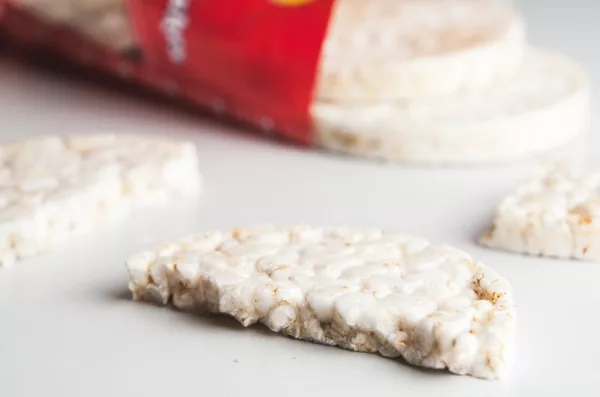Arsenic, Rice and Regulations

Inorganic arsenic (Asi) is present throughout the environment, and as such has been found in an array of foodstuffs. In fact, food is the principle source of this toxic addition to our diets. Rice in particular is known to be especially prone to high levels of Asi, accumulating up to 10-fold more than wheat or barley. While concentrations in rice do not approach lethal doses, chronic exposure to sublethal levels of Asi can cause numerous health problems including skin lesions, cancer, developmental toxicity, neurotoxicity, cardiovascular diseases and diabetes.
The European Food Safety Authority (EFSA) has estimated that in populations that regularly consume rice, individuals may be exposed to Asi levels of approximately 1 µg/kg bodyweight per day.[1] Children are especially vulnerable in these cases as they consume approximately three times more food on a bodyweight basis than adults. Rice-based products such as rice milk, crackers and porridge are frequently used to feed very young children. In light of this concern, the UK Food Standards Agency has gone so far as to suggest that children under the age of four-and-a-half years should refrain from drinking rice milk.[2]
Despite this concern, it hasn’t been until relatively recently that there has been accurate survey data highlighting just how widespread the problem of Asi in rice and rice-based products really is. This could explain the almost complete lack of relevant European Union (EU) or U.S. regulations limiting levels of Asi in foodstuffs. Thankfully, there is a growing body of research that looks set to drive regulatory change.
Assessing Arsenic in Rice-Based Products
In order to gain an understanding of levels of Asi currently within rice-based products, a broad survey and subsequent analysis of various brands has been conducted by the Institute for Global Food Security (Queen’s University Belfast).[3] This is in addition to the recent U.S. Food and Drug Administration (FDA) survey.[4] Both surveys looked at samples of baby rice, rice cereals and rice crackers. The team from Queen’s University Belfast made use of ion chromatography (Thermo Scientific™ Dionex™ ICS-5000+ system) interfaced with an inductively coupled plasma mass spectrometer system (Thermo Scientific™ IiCAP™ Q Series) to quantify the levels of Asi.
The results clearly demonstrated that in many cases, Asi concentrations were above the 200 µg/kg limit recommended by the Joint Food and Agriculture Organization of the United Nations/World Health Organization Expert Committee on Food Additives (JECFA). Rice cereals in particular contained Asi 1.6 times over the JECFA maximum, at 323 µg/kg.[5, 6]
The FDA’s own research looked at 1,300 samples of rice and rice products. They concluded that the average levels of Asi for the various rice and rice-based products ranged from 0.1 to 7.2 µg per serving.[7] Their report goes on to explain that these data do not provide information on what the potential long term effects of consuming Asi at these concentrations are, or what can be done to reduce these levels.
Results from these two surveys do, however, demonstrate that Asi in rice and rice-based products is often above what recommended levels there are. The authors from Queen’s University Belfast conclude that there is an urgent need for regulatory limits on Asi in food, particularly rice-based products.
Looking for quick answers on food safety topics?
Try Ask FSM, our new smart AI search tool.
Ask FSM →
Words from the Regulators
The JECFA limit has already had doubts cast upon it, and the EFSA has suggested it be lowered. The FDA has stated that they continue to work with their partner agencies—along with scientists and consumer groups—to offer further insight into the issue of arsenic in rice. They are expected to be conducting further risk analysis studies on this matter. FDA Commissioner Margaret Hamburg has previously said that “…the FDA is committed to ensuring that we understand the extent to which substances such as arsenic are present in our foods, what risks they may pose, whether these risks can be minimized and to sharing what we know.”
In 2015, the European Commission amended acceptable levels of Asi in foodstuffs.[8] They published regulation (EU) 2015/1006 amending annex to regulation (EC) 1881/2006 regarding the maximum levels of inorganic arsenic in foodstuffs. The limits of Asi in this instance take into account rice and rice-based products and pay attention to infants in particular. They set limits of 200 µg/kg for nonparboiled milled rice (polished or white rice), 300 µg/kg for rice waffles, rice wafers, rice crackers and rice cakes, and 100 µg/kg for rice destined for the production of food for infants and young children. Although these maximum levels are due to be applied in January 2016, for many, they will still be seen as being too high.
What Can be Done?
This doesn’t look to be an issue that will be resolved any time soon. Detailed survey data are now beginning to accumulate, which will eventually be accompanied by chronic toxicological data. However, these chemical analysis studies need to be standardized: a recent proficiency test of 100 labs across 35 counties involved in testing arsenic in food showed that between 25 percent and 43 percent failed to achieve a satisfactory result for the determination of Asi.[9] There is a clear need for more consistent, robust data on both Asi determination and the possible long-term health effects from its consumption. Once this is achieved, it will be difficult for regulatory bodies to ignore, prompting them to re-address and hopefully readjust the limits for Asi in rice and rice-based products.
Paul Dewsbury is a global marketing manager for food and beverage in the chromatography and mass spectrometry group at Thermo Fisher Scientific Inc. He helps customers find solutions to their needs and challenges in the food and beverage sector.
References
1. http://www.efsa.europa.eu/sites/default/files/scientific_output/files/main_documents/1351.pdf.
2. http://webarchive.nationalarchives.gov.uk/20120206100416/http:/food.gov.uk/news/newsarchive/2009/may/arsenicinriceresearch.
3. http://www.ncbi.nlm.nih.gov/pubmed/26258711.
4. http://www.fda.gov/Food/FoodborneIllnessContaminants/Metals/ucm319948.htm.
5. http://www.fao.org/news/story/en/item/238558/icode/.
6. http://www.fda.gov/downloads/Food/FoodborneIllnessContaminants/Metals/UCM352467.pdf.
7. http://www.fda.gov/Food/FoodborneIllnessContaminants/Metals/ucm319948.htm.
8. http://eur-lex.europa.eu/legal-content/EN/TXT/?uri=OJ:JOL_2015_161_R_0006.
9. https://ec.europa.eu/jrc/sites/default/files/eur24314en.pdf.





.webp?t=1721343192)
